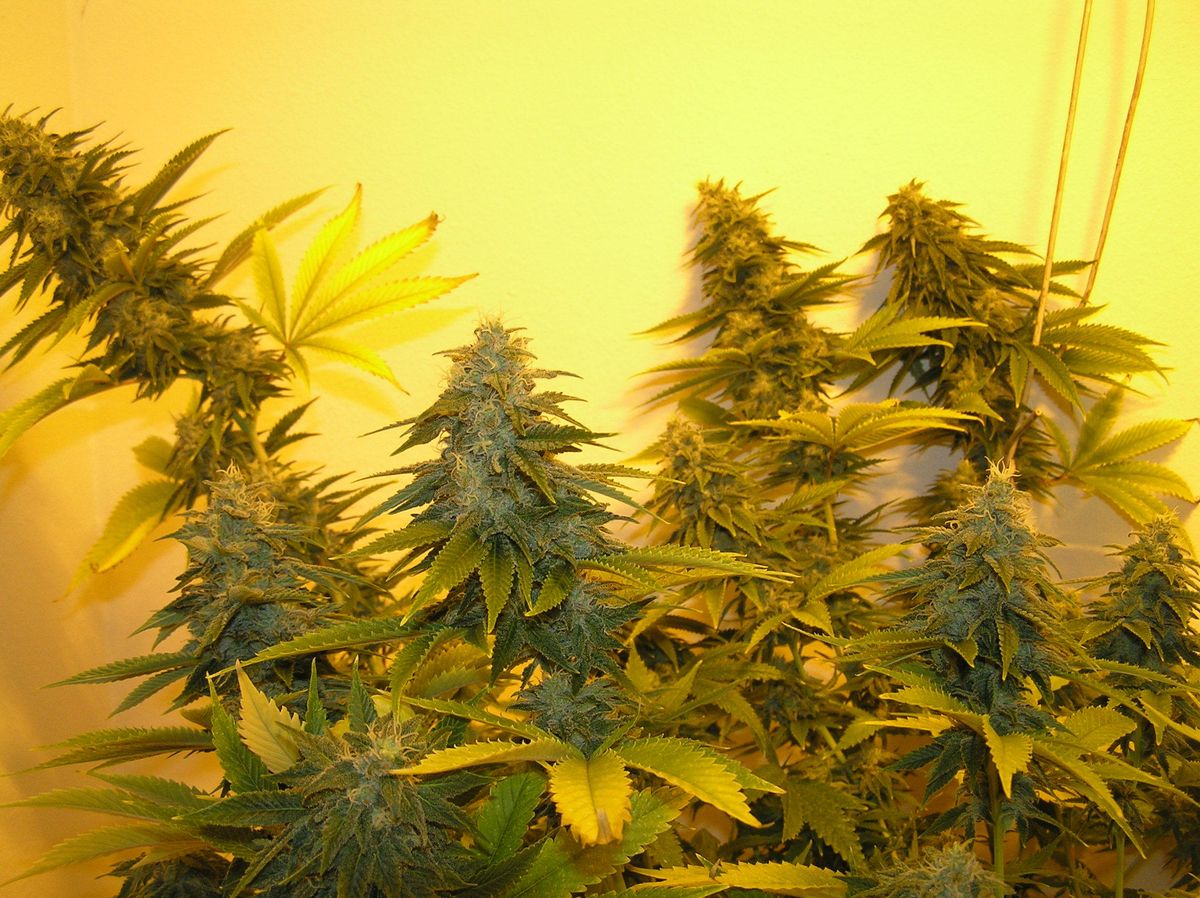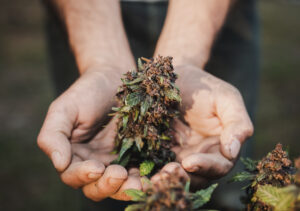The Grape Candy strain embodies a luxurious blend of sweet, fruity flavors with a potent kick, offering a unique experience for cannabis connoisseurs. With its alluring aroma and taste reminiscent of grape-flavored confections, this strain has captivated the palates of users seeking both delightful taste and substantial effects. This article explores the intricate balance of flavor and strength in the Grape Candy strain, the artistry behind its cultivation, and the cultural evolution that has led to the rise of such sweet strains in the cannabis market.
Key Takeaways
- Grape Candy strain tantalizes with a flavor profile that combines sweet grape notes with a robust potency, appealing to a wide range of cannabis enthusiasts.
- The strain’s development reflects the art and science of cannabis breeding, emphasizing the importance of aesthetic and sensory qualities alongside strength.
- Grape Candy stands out among sweet strains for its distinctive aroma and taste, offering a unique alternative to the creamy profiles of hybrid ‘cake’ strains.
- The evolution of sweet strains like Grape Candy is influenced by breeder innovation, cultural trends, and a growing appreciation for fruit-flavored cannabis.
- Responsible cultivation and consumer education are key to sustaining the cannabis industry’s growth and ensuring the continued enjoyment of strains like Grape Candy.
Diving into the Grape Candy Strain: A Taste Sensation

Breaking Down the Flavor Notes
When you think of the Grape Candy strain, imagine diving into a bowl of weed fruity pebbles, each puff bursting with a symphony of sweet and tangy notes. This strain is a true taste sensation, with a flavor profile that’s as complex as it is delightful. The jungle boys deerfield aficionados know that the key to unlocking these flavors lies in the strain’s unique blend of phenolic compounds and terpenoids, which not only provide a sensory feast but also offer a range of beneficial effects.
The art of pheno hunting has led to the creation of strains like Grape Candy, where the goal is to balance the sweet with the potent. It’s a delicate dance, akin to hitting blinkers on a car, where precision and timing are everything. The night terror strain, for example, might share some aromatic profiles with Grape Candy, but it’s the latter’s unique combination of flavors that sets it apart. And when you’re at jungle boys north miami beach, you’ll hear connoisseurs discussing the nuances of these flavors with the same passion as a sommelier describing a fine wine.
Here’s a quick breakdown of what makes Grape Candy’s flavor notes so alluring:
The Grape Candy Experience: Aroma and Taste
The Grape Candy strain is a true connoisseur’s delight, offering a sensory experience that’s as rich and complex as a fine wine. Its aroma is a tapestry of sweet, fruity notes that immediately evoke the image of sun-ripened grapes. The taste follows suit, with a burst of grape flavor that’s so authentic, you might find yourself wondering, why does my poop smell like weed after indulging. It’s a common curiosity among enthusiasts, and while it might be a bit startling, it’s a testament to the strain’s potent flavor profile.
When you visit a dispensary like columbia care chevy chase, you’ll notice that Grape Candy stands out among the sweet strains. It’s not just another goo balls or rice crispy edibles; it’s a full-bodied experience that starts with the first whiff and lingers long after the last exhale. Here’s a quick rundown of what makes this strain so memorable:
- Aroma: A complex bouquet of sweet grape and earthy undertones.
- Flavor: A robust grape taste that mirrors the aroma, with subtle hints of other berries.
- Aftertaste: A lingering sweetness that keeps you coming back for more.
Whether you’re a seasoned smoker or a curious newcomer, the Grape Candy strain is sure to leave a lasting impression with its delightful aroma and taste.
Comparing Sweet Strains: How Grape Candy Stands Out
In the ever-expanding universe of sweet strains, the grape candy strain has carved out a niche that’s as distinct as it is delightful. Unlike its cousins, the glazed donut strain and the white bubblegum strain, grape candy offers a unique profile that’s both nostalgic and nuanced. It’s like taking a stroll down memory lane with a bag of your favorite childhood treats, but with a sophisticated twist that appeals to the modern palate.
When you’re at a party and someone whips out a blinker pen, the aroma that fills the room can be a dead giveaway of the strain in play. While the candy grape strain might share some aromatic notes with other sweet contenders, it’s the depth of its grape flavor that sets it apart. It’s not just a one-note wonder; it’s a symphony of sweet, tangy, and earthy tones that dance on the tongue.
To really appreciate how grape candy stands out, let’s look at a comparison with two other popular sweet strains:
- Glazed Donut Strain: Known for its sugary sweetness and hints of vanilla, this strain is like a warm, comforting dessert.
- White Bubblegum Strain: This strain brings back the classic bubblegum flavor with a creamy finish, reminiscent of childhood bubble-blowing contests.
- Grape Candy Strain: The star of the show, grape candy, combines the rich, fruity essence of grapes with a candy-like sweetness that’s both bold and satisfying.
Each strain has its own appeal, but for those seeking a truly grape-centric experience, the grape candy strain is in a league of its own.
The Potency Puzzle: Balancing Flavor with Strength

THC Levels and Effects
When it comes to the Grape Candy strain, THC levels are a key player in the overall experience. This sweet strain packs a punch with its high THC concentration, which can vary depending on cultivation practices and phenotypes. Users report a range of effects that can be both cerebral and physical, from a heady euphoria and mood elevation to a relaxing body buzz. It’s this potent combination that makes Grape Candy a favorite among those seeking both recreational and therapeutic benefits.
Here’s a quick rundown of the effects you might expect:
- Psychoactive Effects: Euphoria, mood elevation, cerebral stimulation, stress relief.
- Physical Effects: Pain relief, body buzz, anti-inflammation, appetite stimulation.
- Medical Benefits: Potential relief for conditions like epilepsy, PTSD.
Remember, the way cannabis affects you can be influenced by a variety of factors, including your own endocannabinoid system, the dosage, and the method of consumption. And while Grape Candy’s THC levels are alluring, it’s important to approach any strain with an understanding of your own tolerance and the desired effects you’re looking for.
The Entourage Effect: Terpenes and Cannabinoids
The Grape Candy strain is a prime example of the entourage effect in action, where the combination of terpenes and cannabinoids creates a symphony of effects that enhance the overall experience. At the heart of this phenomenon are terpenes, the aromatic compounds responsible for the strain’s signature grape aroma. These are not unique to cannabis; in fact, terpenes are found in many other plants and are often extracted for their enhanced taste and benefits. Due to cost, synthetic terpenes are sometimes used to mimic these flavors and effects.
In the apothecarium allentown, enthusiasts may find a variety of strains, each with a unique terpene profile that contributes to their distinct effects. For instance, the presence of myrcene can induce relaxation, while limonene might uplift the mood. Here’s a quick rundown of some common terpenes found in cannabis:
- Myrcene: Sedative, relaxing
- Limonene: Mood elevation, stress relief
- Caryophyllene: Anti-inflammatory, pain relief
- Pinene: Alertness, memory retention
- Humulene: Appetite suppressant, anti-inflammatory
Understanding the interplay between these terpenes and cannabinoids like THC is crucial for both consumers and cultivators. It’s this intricate balance that determines whether a strain like Grape Candy will be more suited for a night of relaxation or an afternoon pick-me-up.
Grape Candy for Different Tolerances
The Grape Candy strain isn’t just a one-hit wonder; it’s a symphony of flavors that caters to a wide audience. Whether you’re a seasoned smoker or a newbie, there’s a way to enjoy this strain that fits your tolerance level. For the veterans, taking a hit from a gandalf pipe packed with Grape Candy can be a magical journey, while beginners might prefer a milder introduction, perhaps through some creatively themed weed cake ideas.
When it comes to potency, Grape Candy has a range that accommodates different tolerances. Plug and play batteries are a great example of how users can customize their experience. These devices allow for precise control over the heat applied to the oil, which in turn can moderate the intensity of the effects. It’s all about finding that sweet spot where flavor and potency meet your personal preference.
Here’s a quick guide to help you navigate the Grape Candy experience based on your tolerance level:
- Low Tolerance: Start with edibles or low-temperature vaping.
- Medium Tolerance: Experiment with moderate THC levels and balanced effects.
- High Tolerance: Go for the full experience with higher THC concentrations and a gandalf pipe.
Remember, the key is to start slow and pay attention to how your body reacts. Grape Candy is all about the enjoyment, so make sure you’re in for a treat, not a trick!
Cultivating Grape Candy: The Art and Science

Breeding for Flavor and Potency
The art of breeding cannabis strains like Grape Candy is a meticulous dance between science and creativity. By diving into the genetic pool, breeders tease out the most desirable traits from the parent strains, aiming for that perfect balance of robust flavor and potent effects. It’s a pheno hunt that’s both challenging and rewarding, as each new generation could unveil a future classic.
Understanding the plant’s genetic makeup is the cornerstone of breeding. It’s not just about mixing and matching; it’s about knowing which genes to select for the traits you want to amplify. This could be anything from a strain’s bract house, which is packed with resin, to its resistance to pests. The table below outlines some key aspects of the breeding process:
| Aspect | Description |
|---|---|
| Genetic Selection | Pinpointing desired traits like potency and flavor. |
| Pheno Hunting | Evaluating offspring to isolate the finest qualities. |
| Crossbreeding | Combining parent strains to create new profiles. |
| Cultivar Refinement | Fine-tuning the strain through successive generations. |
As the legal markets grow, so does the opportunity for innovation. Collaboration among breeders has accelerated, blending traditional techniques with modern genetic engineering. This synergy is crafting strains with novel characteristics, such as the Grape Candy, which stands out with its sweet allure and formidable strength.
The Growth Cycle of Grape Candy
The cultivation of Grape Candy is a meticulous process that requires careful attention to detail at every stage. From the initial germination of seeds to the final harvest, growers must monitor and adjust to the needs of the plant to ensure the best possible yield and flavor profile.
- Germination: The journey begins with the germination of Grape Candy seeds, a critical step that sets the stage for the entire growth cycle.
- Vegetative Stage: As the seedlings take root, they enter the vegetative stage, growing in size and strength. This period is crucial for establishing a healthy foundation for the buds to come.
- Flowering Stage: Triggered by changes in light exposure, the plants transition into the flowering stage. It’s here that the ‘fruit beginning to mature’ and the ‘seeds maturing’ become the grower’s focus, as these are the precursors to the aromatic buds that Grape Candy is known for.
As the plants mature, they reflect the ‘intricate dance of art and science‘ that defines the cannabis industry. The ‘opportunities await those willing to explore’ this vibrant market, and the growth cycle of Grape Candy is a testament to the dedication required to cultivate such a nuanced strain.
Challenges in Cultivating Sweet Strains
Cultivating strains like Grape Candy isn’t always a walk in the park. Breeders at super clinik know all too well the hurdles they face when trying to perfect these sugary delights. Unlike the more robust and forgiving strains, sweet varieties demand a meticulous approach to balance flavor with potency.
Here’s a taste of the challenges they encounter:
- Genetic complexity: Sweet strains often have intricate genetic profiles that require precise breeding techniques.
- Climate sensitivity: These plants can be quite finicky, needing just the right temperature and humidity.
- Pest management: Sweet aromas attract not just humans but pests too, making organic pest control a must.
- Market competition: With the rise of strains like the lemon jeffery strain, standing out in the market is tougher than ever.
Despite these challenges, the allure of creating the next big hit keeps the spirit of innovation alive. As with the fine art of winemaking, exploring the nuances of marijuana cultivation and strains is a journey of passion and precision. To find the perfect weed strain for your needs, or to discover extravagant strains and cannabis-related articles, check out the website curated by experts like Marco Medic, offering an objective perspective on cannabis use and health benefits.
The Evolution of Sweet Strains: From Blueberry to Grape Candy

The Legacy of Fruit-Flavored Cannabis
The journey of fruit-flavored cannabis strains is a fascinating tale of innovation and taste. From the early days of strains like Blueberry, which set the stage for a new era of flavor-focused breeding, we’ve seen a remarkable evolution. The grape candy strain is a testament to this legacy, offering a sweet symphony of flavors that delight the senses.
The allure of these strains isn’t just in their taste. It’s also in the experience they offer, which can be as varied as the strains themselves. Take the early lemon berry strain, for example, which provides a zesty twist on the fruit-flavored theme. And let’s not forget the modern convenience of consumption methods like the blinker vape, which allows enthusiasts to enjoy their favorite flavors in a discreet and efficient manner.
As we continue to explore and appreciate the rich genetic diversity of cannabis, it’s clear that the legacy of fruit-flavored strains like grape candy will remain a sweet spot in the hearts of connoisseurs. The table below highlights some key milestones in the evolution of these delectable strains:
| Year | Strain | Flavor Profile |
|---|---|---|
| 1970s | Blueberry | Sweet, Berry |
| 2010s | Early Lemon Berry | Citrus, Berry |
| 2020s | Grape Candy | Grape, Sweet |
The path from Blueberry to Grape Candy is not just about the flavors; it’s about the cultural shifts and the breeders’ relentless pursuit of perfection. As we indulge in these sweet creations, we’re not just enjoying a product; we’re savoring the fruits of decades of passionate cultivation and innovation.
Influence of Breeder Innovation
The cannabis industry has witnessed a remarkable transformation, largely due to the ingenuity and creativity of breeders. With the growth of legal markets, these talented individuals now have the freedom to innovate and collaborate, accelerating the development of new strains. This synergy of traditional breeding and genetic engineering has led to strains with unique characteristics, such as the much-talked-about blinkers carts, which offer a distinct experience in both aroma and potency.
Consumer preferences, along with legal and technological advancements, continue to shape the trajectory of cannabis breeding. The expertise of breeders is at the heart of this evolution, reflecting the blend of art and science that is so intrinsic to the cannabis world. As they meticulously evaluate each phenotype, breeders are able to isolate the finest qualities from the parent strains, creating new flavors and experiences for enthusiasts.
The precision that modern breeding techniques afford is nothing short of revolutionary. Genome editing, in particular, has allowed breeders to modify characteristics without altering the cannabinoid profile, ensuring that each new strain not only tantalizes the senses but also meets specific consumer needs.
Cultural Shifts in Strain Preferences
The cannabis landscape is ever-evolving, with the past two decades marking a notable shift in strain preferences. The late ’90s and early 2000s were dominated by a quest for the most potent THC-rich strains, with legends like "White Widow" and "Northern Lights" taking center stage. Fast forward to today, and the scene has diversified immensely. The modern connoisseur’s palate now craves a more nuanced experience, with strains like the dessert-inspired "ice cream sandwich strain" and the fruit-forward "poochie love strain" gaining popularity.
This shift isn’t just about flavor; it’s a reflection of a maturing market where consumers are increasingly discerning. They’re seeking out strains tailored to individual preferences, whether for recreational enjoyment or specific medicinal benefits. The emergence of strains like "pb cookies strain" and "old g kush" speaks to this personalized approach. Meanwhile, the "skunk ape strain" and "old dirty biker strain" offer unique profiles that cater to niche tastes.
As we continue to witness the rise of strains with names as colorful as their flavor profiles—think "blinker weed"—it’s clear that the cultural shifts in strain preferences are as dynamic as the plant itself. The industry’s response, from small artisan growers to large-scale cultivators, has been to innovate, invest, and educate, ensuring that the future of cannabis continues to be as diverse and vibrant as its history.
Responsible Enjoyment: Appreciating the Craft

The Role of Responsible Cultivation
The art of cultivating cannabis is a delicate dance between the grower’s intuition and scientific precision. It’s a craft that has been honed over generations, with each new strain like Grape Candy being a testament to the grower’s skill and creativity. Responsible cultivation goes beyond just producing a quality product; it’s about understanding and respecting the plant, the environment, and the consumers.
Take, for example, the efforts of 420 kingdom, the greenery fort smith, catalyst florence, and kingdom dreams. These pioneers in the industry are not just creating strains for the sake of novelty; they’re pushing the boundaries of what’s possible in cannabis cultivation while maintaining a commitment to sustainability and consumer education.
Here’s a glimpse into the ethos that drives responsible cultivation:
- Sustainability: Prioritizing environmental responsibility and resource conservation.
- Innovation: Continuously exploring new breeding techniques and strain development.
- Education: Helping consumers make informed choices about the strains they select.
- Community: Engaging with local and global communities to share knowledge and best practices.
The future of cannabis cultivation lies in sustainable and efficient practices that prioritize environmental responsibility, resource conservation, and consumer satisfaction. As we continue to explore and appreciate this incredible plant, the role of responsible cultivation will only grow in importance.
Educating Consumers on Strain Selection
In the ever-evolving world of cannabis, the importance of educating consumers on strain selection has never been more crucial. With the market brimming with options like the klutch lorain and the rollins strain, it’s easy for enthusiasts to feel overwhelmed. To navigate this green maze, understanding the nuances of each strain, from the fall 97 strain’s earthy undertones to the hobbit pipe’s whimsical nod to pipes from the hobbit, is key.
Here’s a quick guide to help consumers make informed decisions:
- Research: Dive into the history and effects of strains like quality roots corunna.
- Consult: Speak with knowledgeable dispensary staff or use online resources.
- Experience: Start with small quantities to gauge personal reactions.
- Reflect: Consider the setting and mood you’re aiming for with your choice.
Remember, the journey to finding your perfect strain is as personal as the choice of a hobbit pipe. It’s about discovering what resonates with your palate and desired experience. As the market matures, consumers are not just looking for a quick high; they’re seeking a strain that aligns with their lifestyle and needs.
The Future of Cannabis Breeding and Consumption
As we peer into the crystal ball of cannabis culture, it’s clear that the future is ripe with potential. The besos dispensary and osage creek dispensary are just a couple of pioneers in a world where the art of breeding meets the science of cultivation. With a nod to the past and an eye on innovation, breeders are pushing the envelope, moving beyond the pursuit of just high THC levels to craft strains with complex terpene profiles and diverse effects.
The savvy consumer’s toolkit might include the best electric weed grinder for a perfect burn, or how to use a one hitter for discreet enjoyment. Meanwhile, dispensaries like trees of echo park and liberty health sciences bradenton are curating selections that cater to a broad spectrum of preferences and tolerances. Whether you’re a newcomer or a seasoned enthusiast, places like 443 dispensary and bees buds offer a glimpse into the evolving landscape of cannabis consumption.
Here’s a quick look at the trends shaping the future:
- Emphasis on terpene profiles and the entourage effect
- Breeding legacy strains with high-THC cultivars
- Consumer education on responsible strain selection
- Technological advancements in cultivation and consumption tools
As we embrace these changes, the community’s commitment to responsible cultivation and consumption becomes ever more crucial. The journey of cannabis is one of constant discovery, and the role each of us plays in this evolving narrative is as significant as the strains we cherish.
Frequently Asked Questions
What is the Grape Candy strain known for?
The Grape Candy strain is renowned for its sweet, grape-like flavor profile and aromatic presence, which stands out among other sweet strains. It offers a unique taste sensation paired with a balanced potency that appeals to a variety of cannabis consumers.
How does the Grape Candy strain compare to other sweet strains?
Grape Candy distinguishes itself with a distinct grape flavor that’s reminiscent of grape candies, complemented by a creamy undertone. It is part of the recent trend towards hybrid ‘cake’ strains, which are sought after for their sweet and creamy flavor profiles.
What are THC levels like in the Grape Candy strain?
The THC levels in Grape Candy can vary, but it is generally considered a potent strain. Its balanced effects are attributed to the careful breeding that emphasizes both flavor and strength.
Can you tell me more about the artistry involved in cultivating the Grape Candy strain?
Cultivating Grape Candy involves a blend of scientific knowledge and artistic creativity. Breeders focus on aesthetics such as appearance, aroma, and flavor while also considering the harmony of compounds like THC, CBD, and terpenes to appeal to consumers and ensure a quality harvest.
What challenges do cultivators face when growing sweet strains like Grape Candy?
Cultivators face challenges such as maintaining the delicate balance of flavor and potency, ensuring the plants are hearty and resistant to environmental stressors, and conducting pheno hunts to isolate the best qualities for a unique and appealing strain.
How has the evolution of cannabis strains influenced consumer preferences?
Over the years, cultural and societal trends have shaped consumer preferences, with a notable shift from high-THC strains like ‘White Widow’ to more nuanced, flavor-focused hybrids. This reflects a broader trend towards strains that offer both an enjoyable taste experience and a desired potency.




